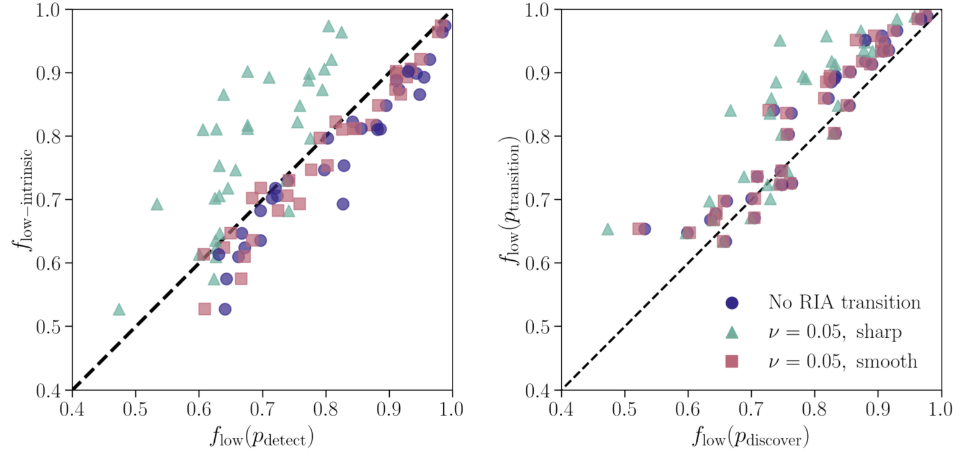Investigating the Lower Mass Gap with Low-mass X-Ray Binary Population Synthesis
Jared C. Siegel, Ilia Kiato, Vicky Kalogera, Christopher P. L. Berry, Thomas J. Maccarone, Katelyn Breivik, Jeff J. Andrews, Simone S. Bavera, Aaron Dotter, Tassos Fragos, Konstantinos Kovlakas, Devina Misra, Kyle A. Rocha, Philipp M. Srivastava, Meng Sun, Zepei Xing, Emmanouil Zapartas
Mass measurements from low-mass black hole X-ray binaries (LMXBs) and radio pulsars have been used to identify a gap between the most massive neutron stars (NSs) and the least massive black holes (BHs). BH mass measurements in LMXBs are typically only possible for transient systems: outburst periods enable detection via all-sky X-ray monitors, while quiescent periods enable radial velocity measurements of the low-mass donor. We quantitatively study selection biases due to the requirement of transient behavior for BH mass measurements. Using rapid population synthesis simulations (COSMIC), detailed binary stellar-evolution models (MESA), and the disk instability model of transient behavior, we demonstrate that transient LMXB selection effects introduce observational biases, and can suppress mass-gap BHs in the observed sample. However, we find a population of transient LMXBs with mass-gap BHs form through accretion-induced collapse of an NS during the LMXB phase, which is inconsistent with observations. These results are robust against variations of binary evolution prescriptions. The significance of this accretion-induced collapse population depends upon the maximum NS birth mass MNS,birth−max . To reflect the observed dearth of low-mass BHs, COSMIC and MESA models favor MNS,birth−max≲2M⊙ . In the absence of further observational biases against LMXBs with mass-gap BHs, our results indicate the need for additional physics connected to the modeling of LMXB formation and evolution.

NASA/ADS: 2023ApJ…954..212S
